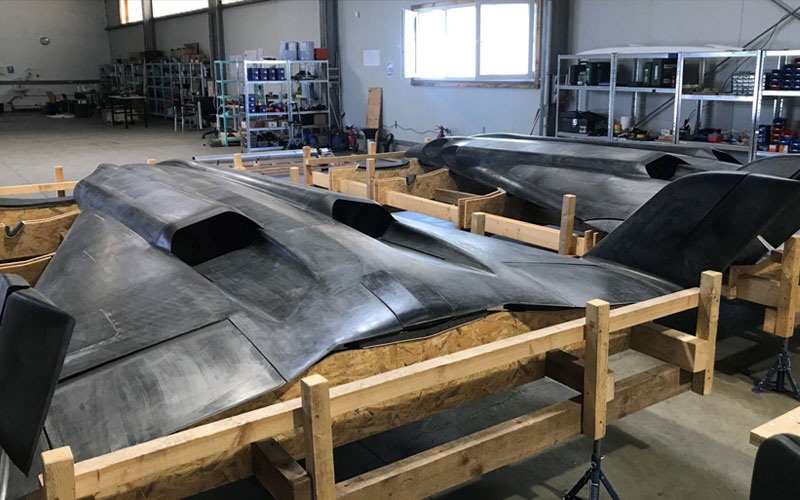
Bremen-based startup POLARIS Spaceplanes has taken delivery of a pair of airframe structures for its MIRA II and MIRA III spaceplane demonstrators.
MIRA II and III will be identical five-metre-long spaceplane demonstrators powered by four turbine jet engines and one of the company’s in-house-developed AS-1 linear aerospike rocket engines. The pair will replace the decommissioned 4.3-metre-long MIRA demonstrator, which was damaged during takeoff in March as the company prepared for its first rocket-powered flight.
POLARIS announced on 30 July that it had taken delivery of the glass-fiber composite structures for its MIRA II and MIRA III demonstrators. The composite structures were built by the Aachen-based company Up2-Tec. According to POLARIS, it selected to build two identical vehicles to “speed up flight testing and have a reserve aircraft.”
With the main structure of the two vehicles now in hand, POLARIS will move forward with the assembly and integration of the demonstrators. The company aims to begin flight testing as early as September.
What comes after MIRA II and III?
POLARIS has previously stated that following MIRA, its next demonstrator, which is called NOVA, will be the last before the company works towards its AURORA multipurpose spaceplane and hypersonic transport system. However, the company now appears to be pushing to move forward with NOVA as its first commercial offering. NOVA is also now planned to be larger than the six to seven metres that it was initially envisioned to be.
“The “MIRAs” are planned to be the last pure technology demonstration vehicles of POLARIS,” the company explained in a 30 July statement. “In 2025, we will build and fly the ca. 8 m long supersonic successor NOVA, which will be the prototype for a commercial product.”
While AURORA is expected to be capable of delivering payloads of up to 1,000 kilograms to orbit with the addition of an expended upper stage, it’s unclear if NOVA will offer that capability. The company may instead offer NOVA solely as a hypersonic testing platform.




